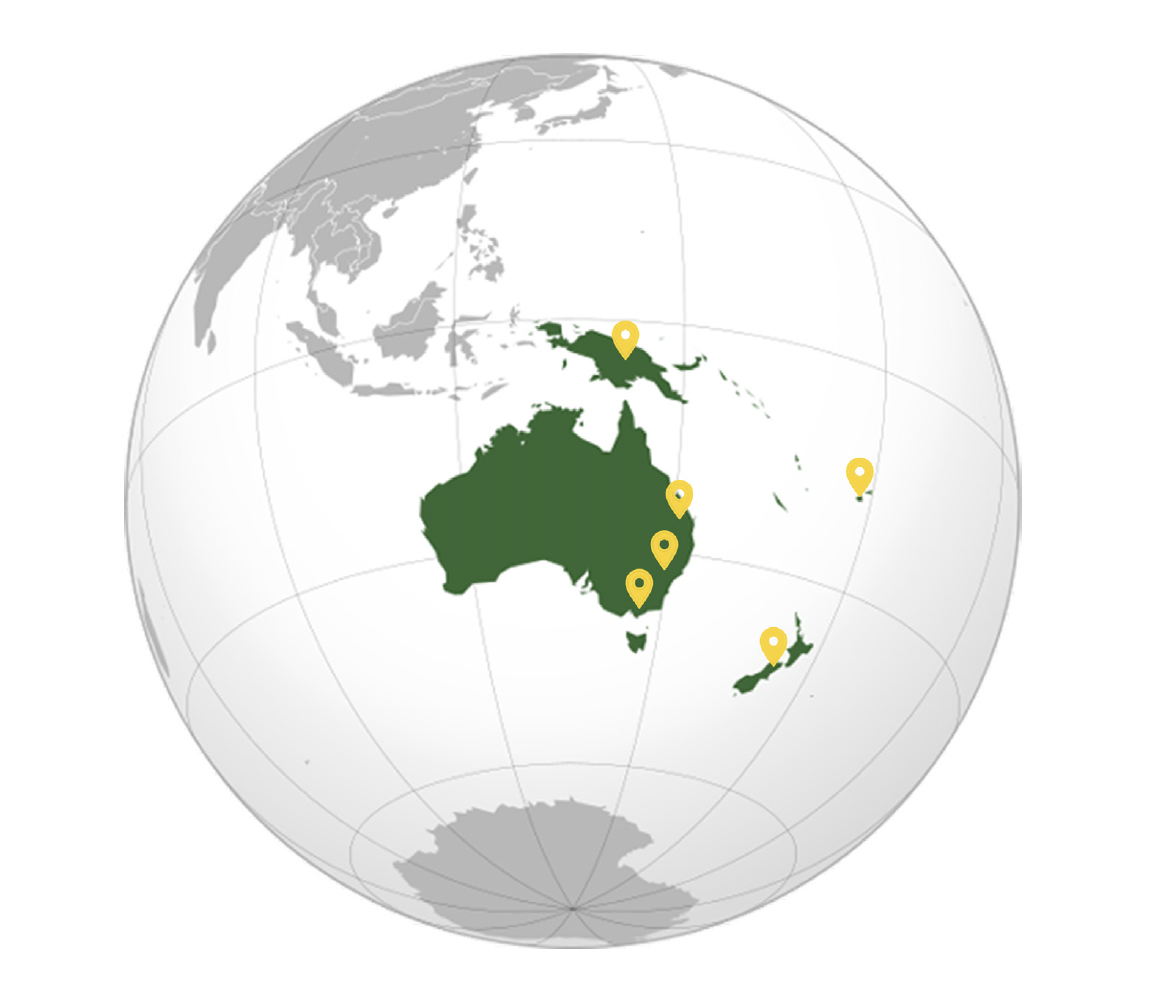
Across the Globe.
One Tree at a Time.
Global Project Initiative (GPI)
We all share the same air, atmosphere, and planet. One reforestation project in one part of the globe, benefits the entire world when it comes to global carbon levels. Our goal is multiple projects internationally that run simultaneously in both hemispheres. We do this by partnering with the stakeholders within governments, states, and countries that want large-scale services to remedy their re-greening efforts in both a timely and effective fashion.
We currently are expanding throughout the Australasian market and have engaged with the stakeholders of those areas who have large land areas effected by forest fire, natural disaster, and systemic vegetation losses.
Our speciality lies in the logistics of area revegetation in the thousands of hectares across numbering local plant species taking into account local ecosystems and their natural history.
Systems for Every Ecosystem
A forest can be gone in a blink of an eye, but restoring it is a complicated and time/resource intensive process. This is even further exacerbated when it comes to parcels of land in the tens of thousands of hectares that have experienced heavy losses. The intricacies of these ecosystems, forests, grasslands, and estuaries is further impounded by the complicated relationship between them when you take into account plant species, wildlife populations, and differing levels of succession for each system across a large area. It takes time for an area to recover, and for an area to support that recovery successfully in the long-term.
We take all this into account when planning the restoration of an area by analysing the native flora and fauna of the area of focus, understory species, grassland species, and even take into account the potential of invasive species moving into a distrubed area before local native species can recover it again.
Our systems take the principles and sciences of soil ecology, plant reproduction, sustainability and support of biomass for a disturbed area’s recovery into account as well as the topography and historical precipitation levels into account as we stage the term recovery of these areas and systems from a successionary standpoint for restoration.
We plant for the success of what we plant to take root and build upon itself at the level an impacted area can support, with the goal of it becoming self-sustaining enough to handle a quicker recovery time over a larger area.

As we launch our platform systems in multiple high-profile projects internationally, we also collect data sets for publication use in collaboration with our partners in order to publish our advances, so others may benefit from our successes in their own restoration efforts.
Get in touch today.
Herming Grove’s operational plan is aimed with a primary long-term end goal of large scale re-greening efforts utilising a scalable formulaic approach.
Using state-of-the art technology in a combined systematic design, Herming Grove’s end goal is 30+ Billion Trees Planted a Year to reverse the level of Carbon Fixation lost annually through deforestation and other carbon fixing plant biomass lost via anthropogenic causes. Our efforts in combination with currently advancing carbon sequestering technologies and reversals of harmful ecological practices on a global scale, could lead us to a foreseeable future where climate change and its damages have been successfully reversed within our lifetime.
We can achieve this goal with our systems as we scale them up. It just becomes a question of the number of drone-seeding systems in place over a length of time. This duration of time shortens drastically with the help of sponsors, partners, research institutions, and our volunteers.



